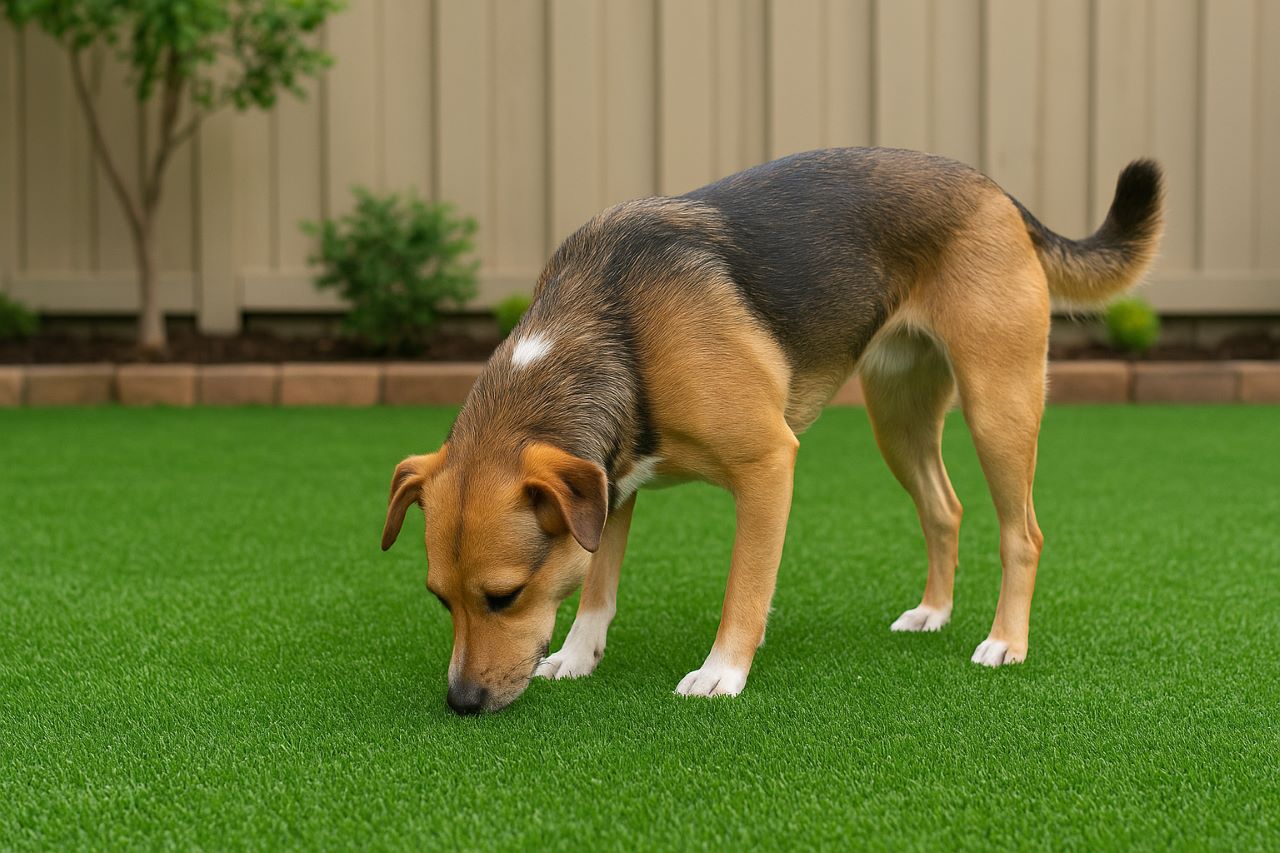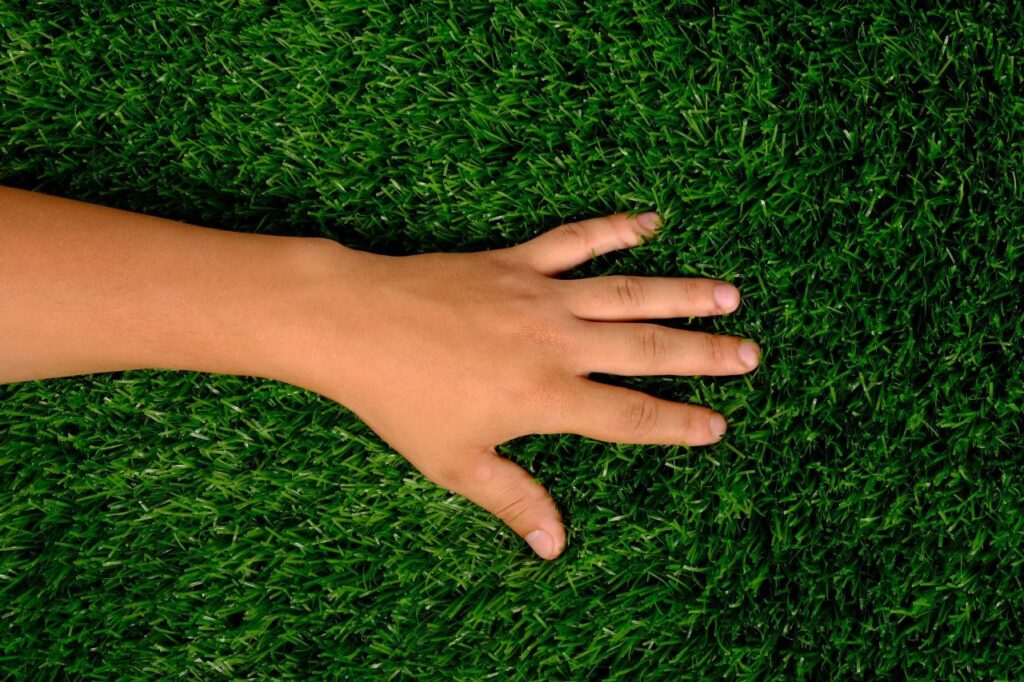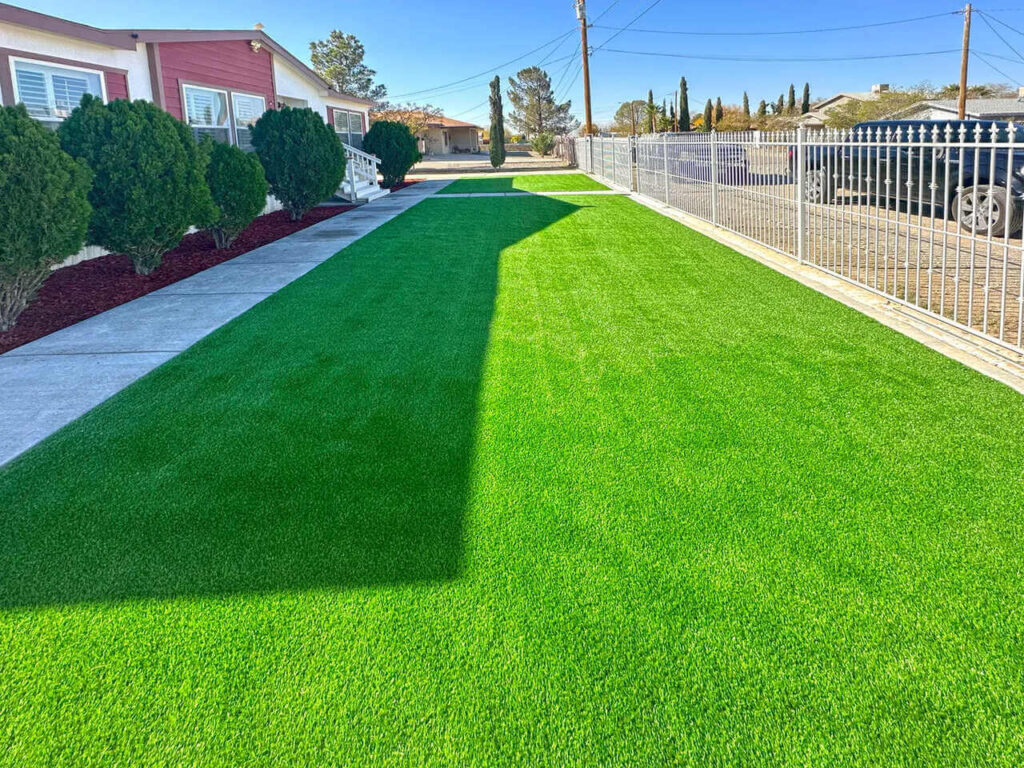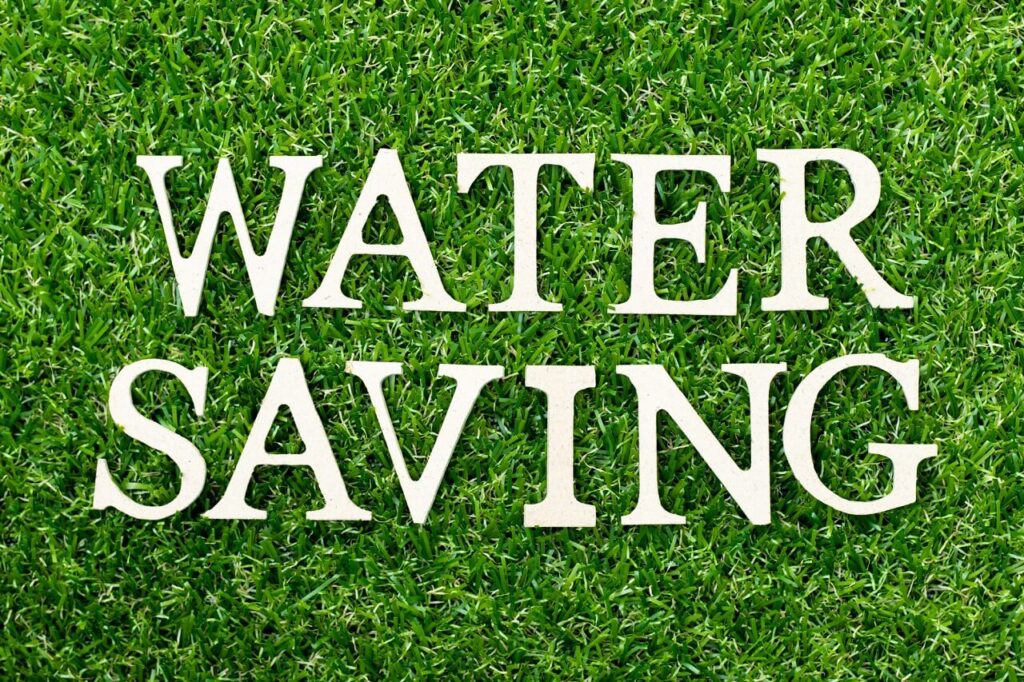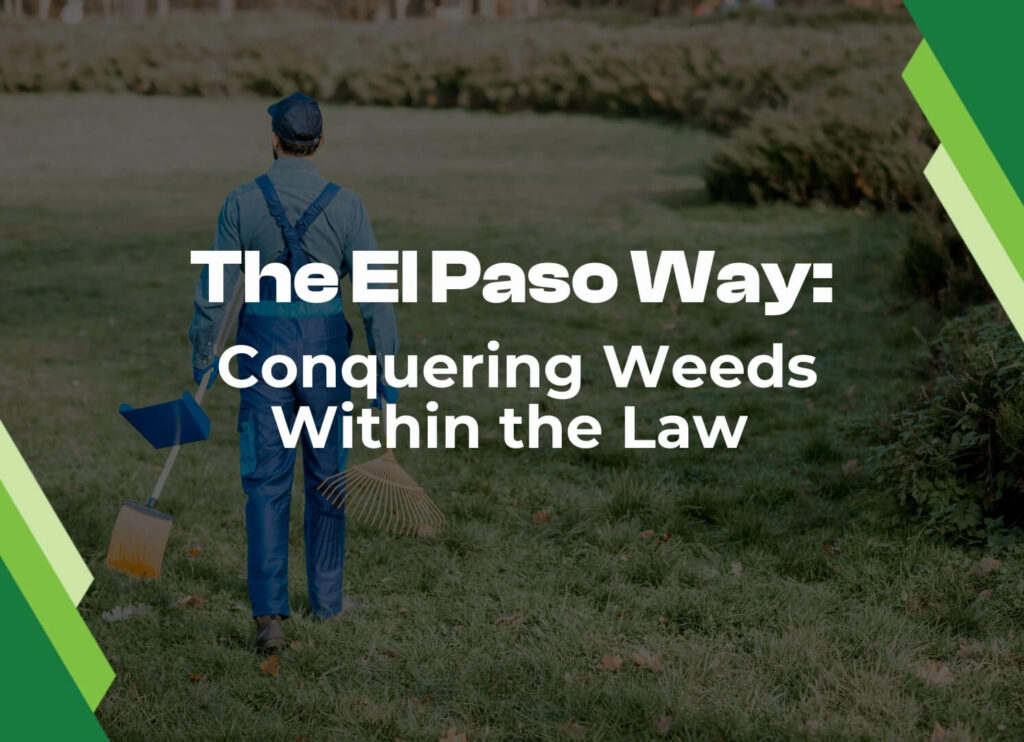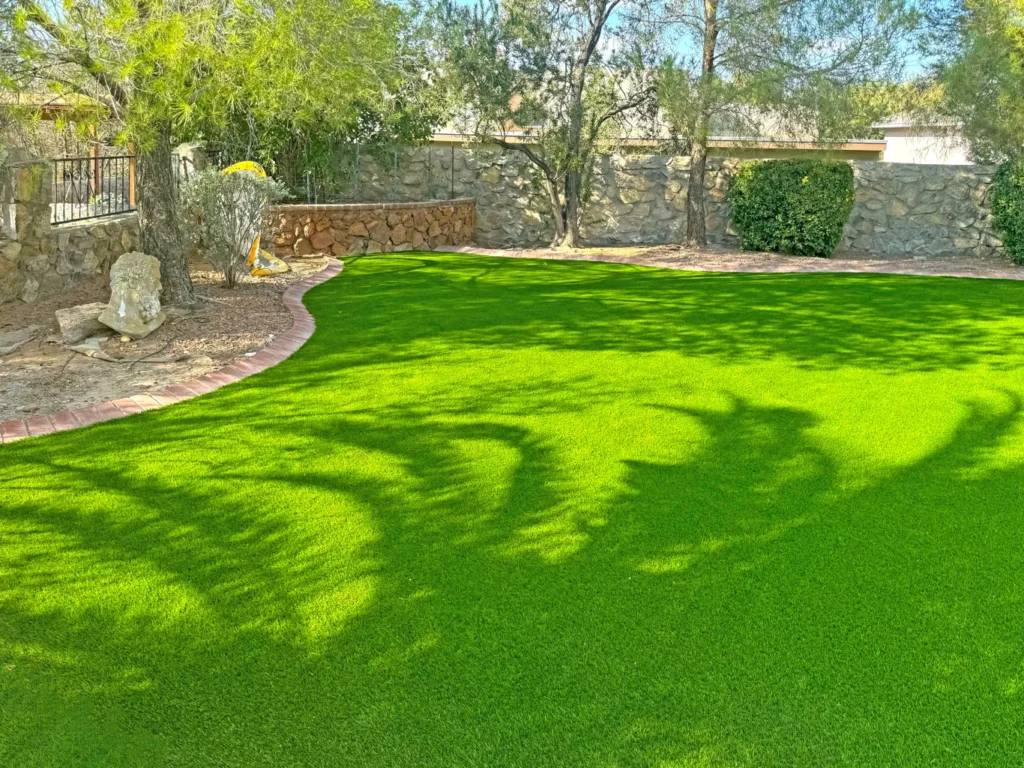If your artificial turf smells like dog pee, don’t worry, it’s a common issue that can be managed easily.
Artificial grass is durable and pet-friendly, but odors can develop without proper care.
This comprehensive guide explains why artificial turf sometimes smells of dog urine, how to prevent odors, and offers practical tips for effective odor removal.
Why Does Artificial Turf Smell Like Dog Pee?
Dog urine contains urea and uric acid, which break down into ammonia, creating an unpleasant odor.
Generally, artificial grass is designed to drain quickly, but certain conditions can cause smells to linger:
Inadequate Drainage
Poorly installed turf or unsuitable base materials can cause urine to pool rather than drain away efficiently. Accumulated urine creates an environment for bacterial growth, intensifying odors.
Repeated Urination in One Area
Frequent urination in the same spot can saturate turf fibers and base layers, creating concentrated urine pockets and persistent odors.
Low-Quality Turf Materials
Cheap turf often has impermeable backing made from latex or other materials that trap moisture, making it difficult for urine to drain effectively, thereby exacerbating odors.
Incorrect Infill Selection
Traditional infills such as sand or crumb rubber can absorb and retain urine, intensifying odors and prolonging unpleasant smells.
Lack of Regular Maintenance
Neglecting routine rinsing and periodic deep cleaning allows bacteria and residue to build up, increasing odor problems.
Additionally, hot weather can intensify odors as heat increases bacterial activity, making it crucial to stay ahead of maintenance during warmer seasons.
How Turf and Installation Affect Odors
The quality and design of artificial grass significantly impact odor management. To effectively manage odors, select turf with:
- Permeable Polyurethane Backing: This backing type allows urine to drain rapidly, greatly reducing the chances of odor accumulation.
- Antimicrobial Properties: Some turf varieties are treated with antimicrobial agents, inhibiting bacterial growth that contributes to persistent odors.
Proper installation is equally critical for odor prevention. Good drainage requires a professionally compacted stone base beneath the turf to facilitate quick urine runoff.
Weed barriers, if used, should be placed beneath this drainage layer rather than directly under the turf, ensuring unobstructed drainage.
Additionally, ensuring proper turf blade density and height can help prevent odors by allowing better airflow and quicker drying.
Odor-Resistant Turf Infill Options
Infill significantly affects how your turf handles odor. Traditional infills like sand or crumb rubber absorb and trap odors. Superior alternatives include:
Antimicrobial Infill
Contains specially formulated agents that actively inhibit bacteria growth responsible for odor creation, thus providing ongoing odor protection.
Zeolite Infill
This natural volcanic mineral has a porous, crystalline structure that effectively absorbs ammonia molecules from dog urine, significantly reducing odor.
Organic Infill Options
Some infills are made from organic materials like coconut fibers, which naturally resist odors and improve turf cooling.
For optimal odor control, apply infill generously—typically around 2-3 pounds per square foot. Adequate coverage ensures maximum effectiveness.
How to Remove Dog Pee Smell From Turf
Routine maintenance combined with periodic deep cleaning keeps turf odor-free. Here’s how to effectively eliminate dog urine odors:
Step-by-Step Cleaning Process
1. Remove Solid Waste
Quickly pick up and dispose of dog waste regularly to minimize bacterial growth.
2. Rinse Thoroughly With Water
Use a garden hose frequently to flush urine residues from turf fibers. Regular rinsing significantly reduces odor buildup and prevents residue accumulation.
3. Apply a Cleaner
Select either a vinegar solution or an enzyme-based cleaner for deeper cleaning:
- Vinegar Solution: Combine equal parts white vinegar and water. Spray generously over the affected area, and allow the solution to soak into the turf for 10-15 minutes. Vinegar naturally disinfects, neutralizes odors, and is safe for pets.
- Enzyme-Based Cleaner: These cleaners contain beneficial bacteria and enzymes that digest urine at the molecular level, effectively eliminating odors. Apply according to instructions, ensuring adequate soaking time for maximum effectiveness.
4. Allow Soaking Time
Let the cleaning solution remain for 10-15 minutes to thoroughly neutralize the urine odor.
5. Rinse Again
Thoroughly flush the area again to remove all cleaner residues and any remaining odor-causing particles.
6. Optional Deodorizing
Sprinkle baking soda across damp turf to absorb residual odors. Allow it to sit for 20-30 minutes before vacuuming or sweeping it away. Commercial turf deodorizing products are also effective and easy to apply.
Important Cleaning Tips
- Avoid harsh chemicals such as bleach, as they can damage synthetic turf fibers and pose risks to pets.
- Regular weekly rinsing with water dramatically reduces odor development.
- Schedule deeper enzyme treatments monthly or bi-monthly, especially during warmer seasons when odors can become more prominent.
- Rotate your pet’s play area periodically to prevent urine concentration in one spot.
Maintenance Tips for an Odor-Free Turf
Regular upkeep is essential for keeping odors at bay. Follow these straightforward practices:
Routine Rinsing
Consistent weekly watering significantly reduces the buildup of odors.
Prompt Waste Removal
Quickly removing solid waste helps prevent bacterial buildup.
Periodic Deep Cleaning
Regular enzyme treatments and deep cleaning ensure turf stays fresh throughout the year.
Infill Maintenance
Occasionally replenish infill, particularly after deep cleanings, to maintain effective odor control and proper drainage.
Regular Brushing
Regularly brushing turf blades helps maintain their upright position and enhances drainage efficiency.
Common FAQs
Does Artificial Turf Always Smell With Dogs?
Not necessarily. Artificial turf typically smells when improperly installed, inadequately maintained, or unsuitable materials are selected. Properly installed, high-quality turf rarely develops persistent odors.
Can Dog Urine Damage Artificial Turf?
Dog urine typically does not damage quality artificial grass. Synthetic turf is durable, designed to withstand frequent pet use, and maintains structural integrity. Odor issues are usually separate from structural concerns.
Conclusion
Artificial turf remains an excellent option for pet owners, offering durability, low-maintenance convenience, and aesthetic appeal.
By carefully selecting appropriate materials, ensuring professional installation, using suitable infill, and following a consistent maintenance routine, you can enjoy an odor-free artificial lawn.
Don’t let odor concerns deter you. These manageable solutions help maintain a fresh, inviting, and pet-friendly artificial grass area.
